Traditional and modern, discover both sides of the fruit of the palmyra tree that’s been flooding our bazaars

The tadgola or ice apple tree is endemic to western coastal Maharashtra, and available in abundance between April and July. Growing on palymra trees, the delicate fruit has to be extracted from the shell without puncturing its watery insides
Ice apples or tadgola are turning into mojitos this summer, and trending too. This may be a good way to introduce the younger generation to the wobbly-textured, ice-looking summer fruit, often sold on handcarts. These provided respite from the heat and dehydration when no Instagram was required to tell you what’s good for your gut. Encased in a coconut-like shell, a group of these nutrient-dense fruit would be patiently extracted by the vendor using a special knife. It’s a skill.
ADVERTISEMENT
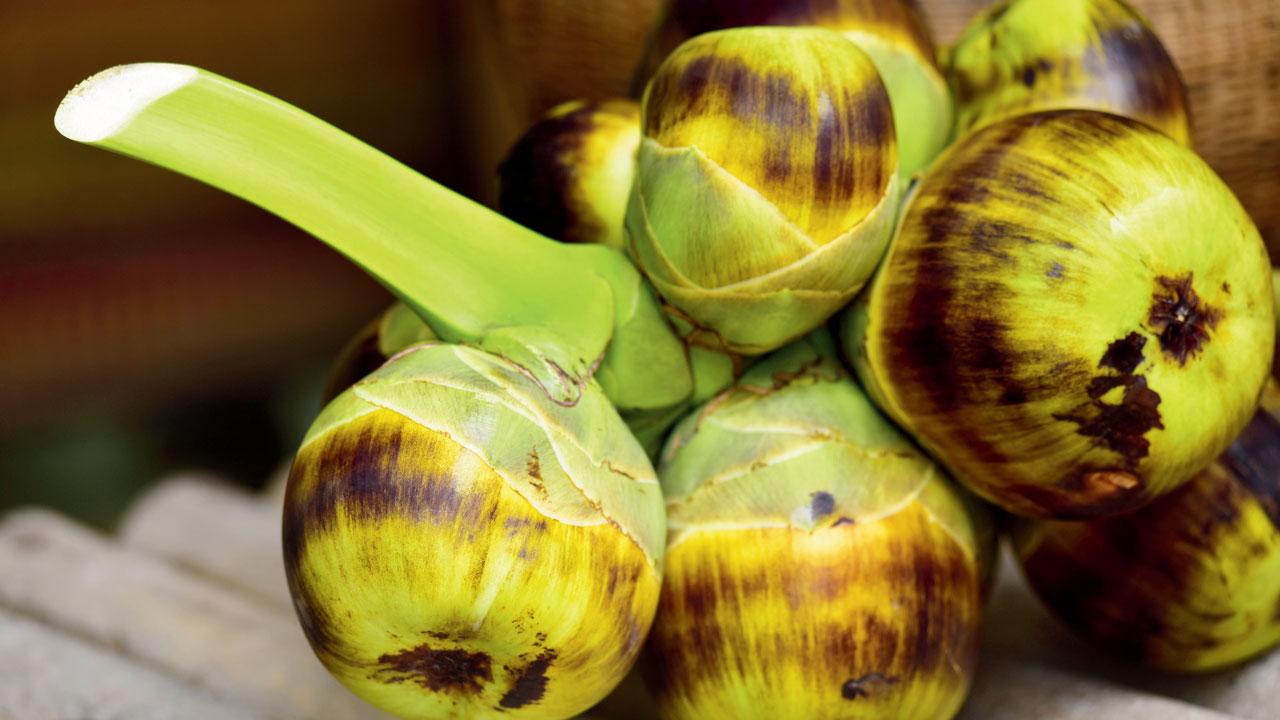
Called nungu in Malayalam, tadgola in Maharashtra, talam in Tamil and taati ninguin Kannad—the fruit has a massive list of health benefits, including being loaded with vitamins, minerals, calcium, phytonutrients and fibre. In fact, in Tamil Nadu, it’s used to make payasam and eral nungu (Puducherry prawn and palmera fruit curry). More interestingly, in Bengal, the flesh is used to make bora or fritters. Cookbook writer and food curator-consultant Ananya Banerjee, says, “In Bengali, ice apples are called taal saans. That’s the unripe version. The Bengali sweet sondesh takes inspiration from taal saans. It is made in a mould which looks exactly like the fruit. In winter, sondesh is made with nolen gur, the first flush of the juice of date plum, and called jalbhora sondesh, resembling the fruit. When ripe, the ice apple is called taal. Many Bengali recipes can be made with taal; the most popular ones are taaler bora, taal kheer and taaler luchi.” Usually consumed as fruit in Bengal, sometimes the juicy flesh which tastes a lot like tender coconut, is used to make a sherbat wit the addition of rose, she adds.
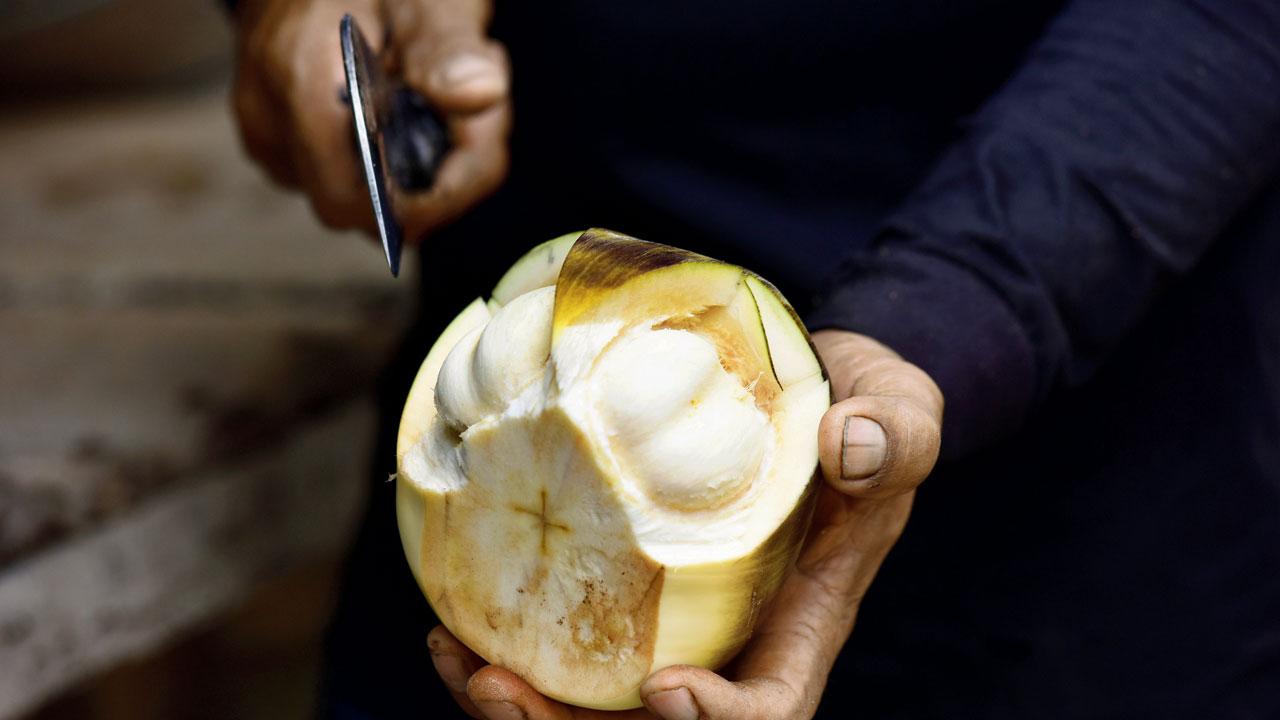
Shriya Naheta Wadhwa, founder of Zama Organics, has been retailing tadgola through her online store. “Available from April to July, ice apples have a texture similar to the lychee—watery, slimy and sweet with a slight bitter hint from its own shell. This fruit is grown and easily found in western coastal Maharashtra. We source them from Palghar. Best consumed in its natural state, simply peel the fruit, slurp the water that’s esconsed in its centre, and eat the flesh after.”

Ananya Banerjee
Chef Karishma Sakhrani is a fan of its contrasting juicy and firm texture that makes it an interesting fruit to work with in the kitchen. “You can make dessert with it and use the firmer ones in savoury recipes like curries. My favourite is to combine it with coconut milk. The sweet lusciousness of coconut milk adds a whole other dimension,” she adds.
Banerjee’s taaler bora
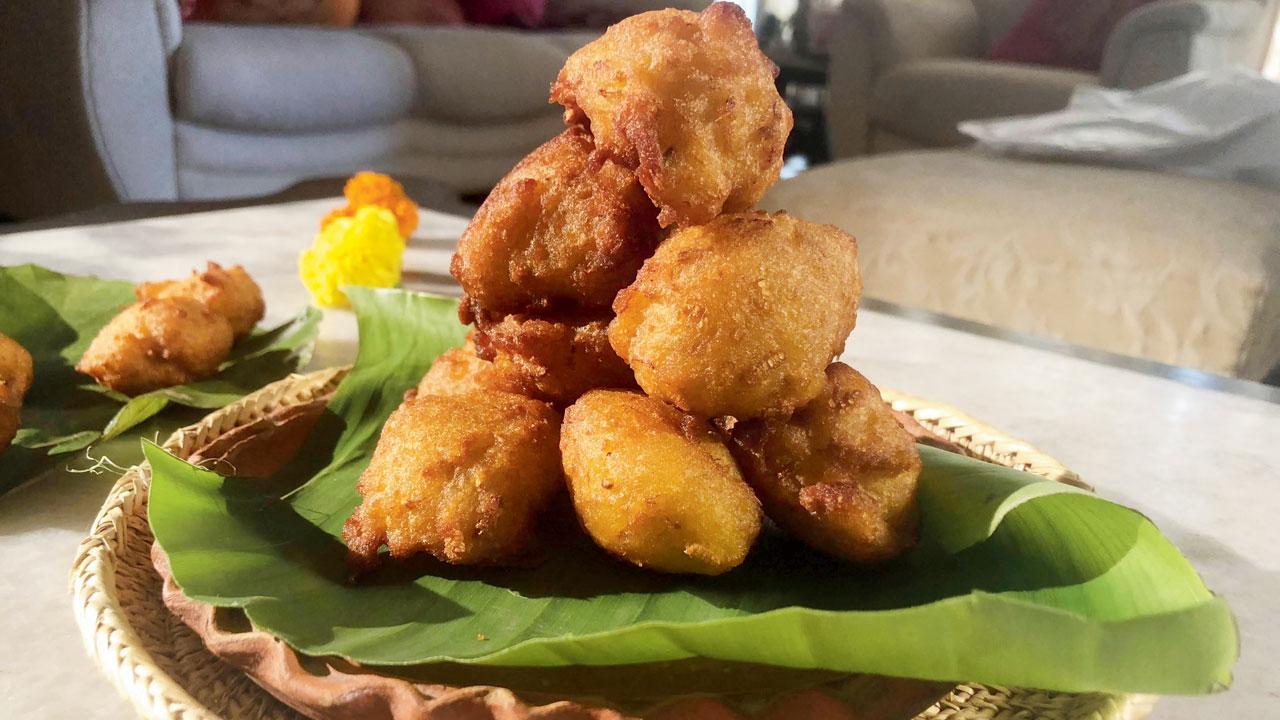
Ingredients
1 cup pulp of ice apples
1 banana, ripe, mashed
1/2 cup maida
1/2 cup rice flour
1 cup rice puff
1/2 cup grated coconut
1/2 cup sugar
Oil for deep frying
Method
In a bowl, take the taal pulp and mashed banana, rice flour, grated coconut, rice puff, and sugar and mix well. If the mixture is wet then add a little more maida to form a thick batter. Using your hand or a spoon put one 1 tablespoon of batter and deep fry till brown. Take them out and put on a kitchen towel before serving.
Banerjee’s taaler luchi
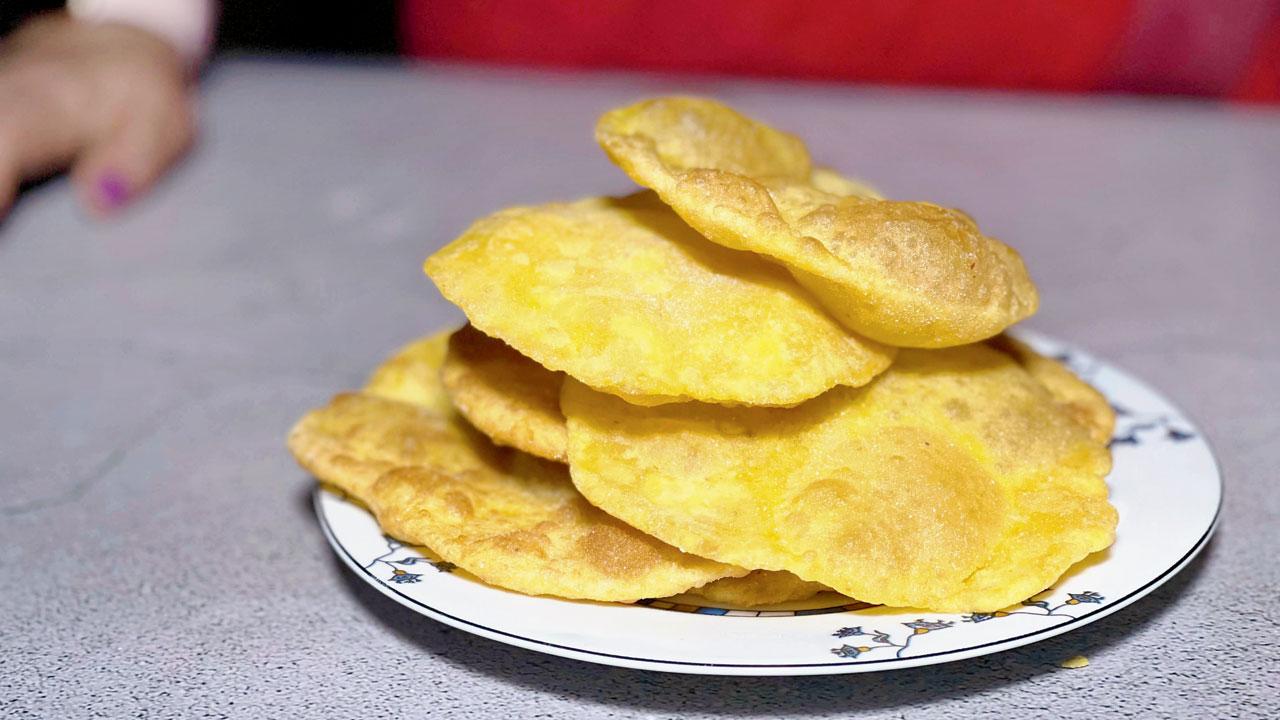
Ingredients
1 cup maida
1 tbsp ghee
2 tbsp taal pulp
Water, if required
Ghee or refined oil if required
Salt to taste
Method
Prepare a firm dough with maida, ghee, tal pulp, and little water, and keep aside. Prepare small balls from the dough and cover them with a moist napkin. Apply some oil and roll each into a circle of 3-4 inches. Deep fry the luchis in hot oil.
Banerjee’s taaler kheer

Ingredients
1 cup ice apple pulp
1 litre milk
1 cup sugar
1/2 cup grated coconut
A pinch cardamom powder
Method
Bring milk and sugar to a boil. Reduce to half. Add tal pulp and cook for 15-20 minutes. Add grated coconut and cardamom powder and mix well. The kheer is ready.

Chef Karishma Sakhrani feels that the versatility of ice apples lies in the simplicity of the fruit. Pic/Pradeep Dhivar
Sakhrani’s coconut tadgola panna cotta
“Being vegetarian, agar has always come to good use for me. It’s a great alternative to gelatine and helps make a fabulous vegan panna cotta. My love for palm fruit prompted me to create this dreamy, creamy coconut panna cotta with chunks of tadgola to intercept the creaminess,” says Sakhrani.

Ingredients
200 ml coconut milk
2 to 3 tbsp sugar
1/4 tsp agar agar
4 pcs ice apples
A pinch of salt
Method
Combine all the ingredients in a small pan and whisk thoroughly. Bring the mixture to a boil while continuously stirring. Take off the heat for a few minutes after the first boil. Let it cool down, while still stirring, and then pour into a silicone mould lined with peeled and chopped ice apples. Let the panna cotta set in the fridge. De-mould and serve chilled, topped with a sprinkle of black sesame and a toasted coconut slice.
Sakhrani’s tadgola and jaggery
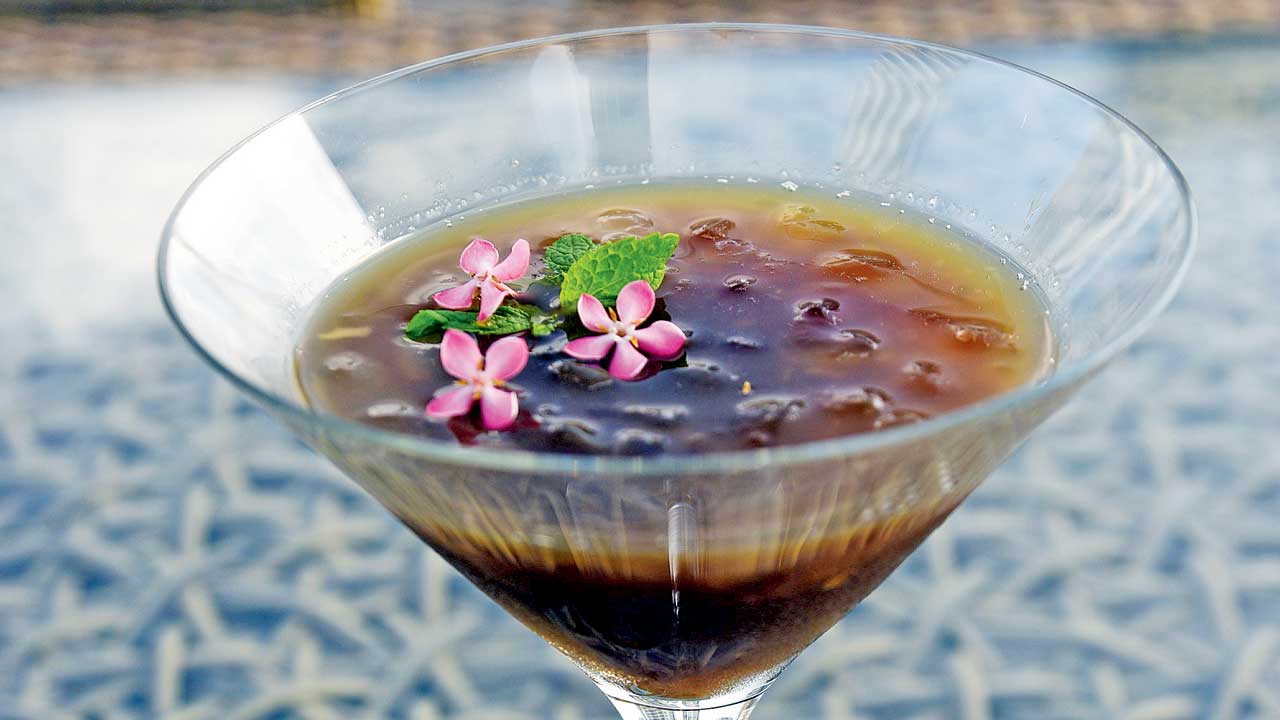
“Icy desserts that combine fruits, jellies, some forms of sweetener (and sometimes coconut milk) are popular all over Southeast Asia. It’s almost like a dessert-soup. As strange as it sounds, it hits the spot! This is the easiest, quickest sweet fix,” says Sakhrani.
Ingredients
6 pcs ice apples
1 tbsp jaggery
A pinch of salt
Ice cubes, crushed
Method
Peel and chop the ice apples. Sprinkle a little bit of jaggery and a pinch of salt. Mix well and leave to chill in the refrigerator. Serve with some crushed ice.
Wadhwa’s tadgola pudding
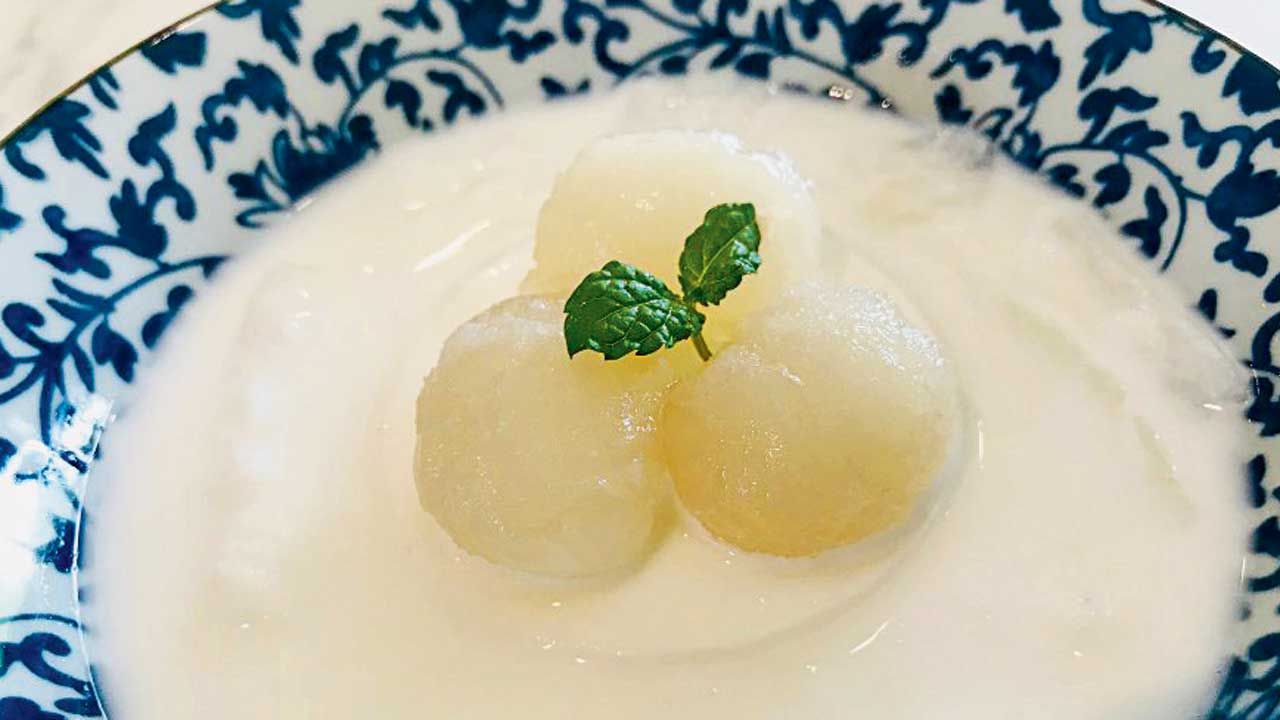
Ingredients
10-12 ice apples
1/2 cup coconut sugar
1/2 cup cream
Mint leaves to garnish
Method
Freeze the ice apples for 3 to 4 hours. Refrigerate the cream till it becomes firm. Peel the frozen tadgolas and add them to a blender along with the coconut sugar and cream. Blend them for 2-3 minutes until the mixture is creamy and semi-thick. Garnish with mint leaves and serve immediately.
Vegan tadgola ice cream
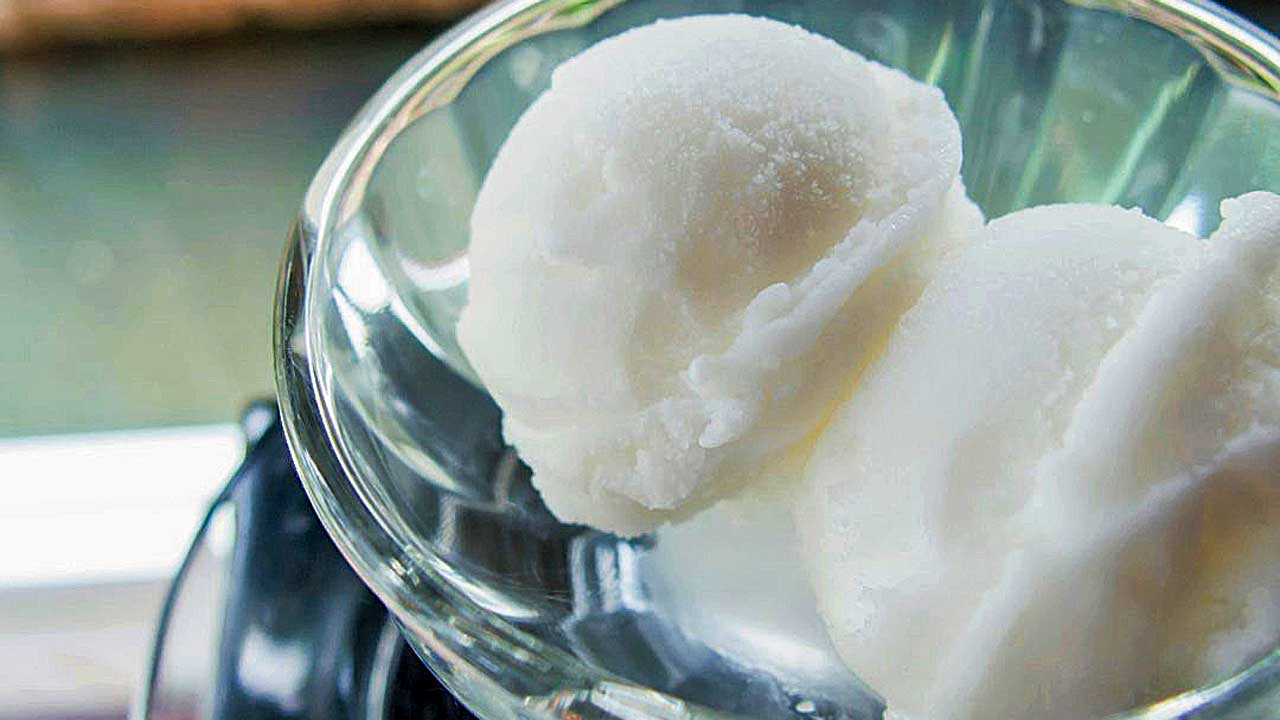
Ingredients
10-15 ice apples (peeled and frozen)
1 frozen banana
3/4 cup Coconut milk
Fresh mint leaves for garnish
Method
In a blender, add the frozen bananas, tadgola, and coconut milk, and blend until it forms a thick and creamy texture. Scoop the ice cream out in serving bowls and garnish it with fresh mint leaves.
 Subscribe today by clicking the link and stay updated with the latest news!" Click here!
Subscribe today by clicking the link and stay updated with the latest news!" Click here!







